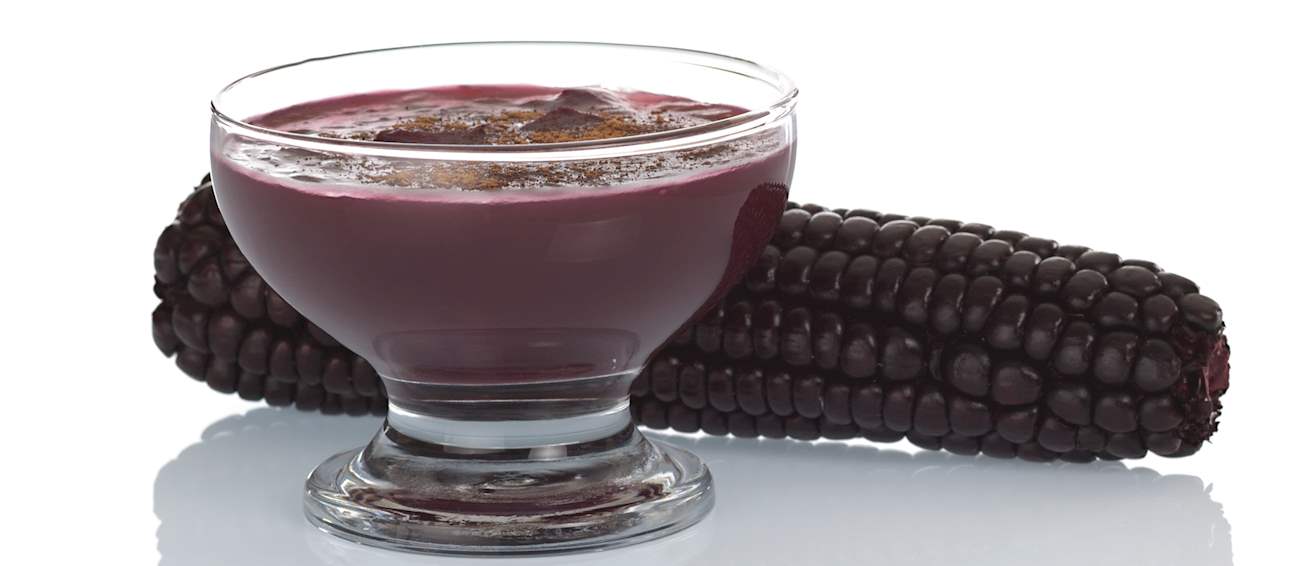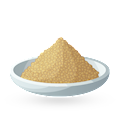MAIN INGREDIENTS
Picarones are a staple of Peruvian street food, the tasty, deep-fried treats that are also often referred to as the "Peruvian doughnuts". The dough is shaped into a ring and fried in hot oil, and picarones are then drizzled with a sweet cane syrup.
It is believed that they were first prepared during the Spanish Viceroyalty in Lima and they were probably based on the Spanish buñuelos. The recipe was adapted by the locals who added sweet potatoes and squash to the dough, and a new dish was created.
MOST ICONIC Picarones
View moreMazamorra morada is a well-known Peruvian dessert made with purple corn as the key ingredient, giving the dessert its signature color and flavor. Besides purple corn, the pudding is made with various fruits such as apples, peaches, and pineapple, sugar, and either potato flour or corn starch as thickening agents.
The dessert is traditionally spiced with cloves and cinnamon, and it is usually served cold. In Peru, it can be found at street food carts, but also in upscale restaurants.
MAIN INGREDIENTS
Crema volteada (lit. upside-down cream) is the Peruvian version of the Spanish flan and the French crème caramel, prepared with sugar, condensed milk, evaporated milk, vanilla essence, and eggs. The vanilla-flavored custard made with milk and eggs is covered in caramel sauce, making the dessert sweet and rich.
This dessert is beloved throughout the country, and it can be served cold or at room temperature.
Queso helado is a Peruvian dessert that's very similar to ice cream, and it originates from Arequipa. It's usually made with a combination of whole milk, evaporated milk, cinnamon, cloves, desiccated coconut, sugar, and egg yolks. Both types of milk are simmered with cinnamon, cloves, coconut, and sugar.
The pan is taken off the heat, the egg yolks are added to the pan one by one, and it's then returned to the heat and simmered for a few minutes. The mixture is strained in order to remove the spices, and it's then placed in the freezer until frozen.
MAIN INGREDIENTS
Turrón de Doña Pepa is a traditional dessert that is prepared and consumed in October, or, as it’s called in Peru, el mes morada, meaning the purple month. This layered nougat is drizzled with chancaca, then topped with a variety of colorful sprinkles and candies, resulting in a psychedelic concoction with a striking visual appearance, made with a combination of anise seeds, flour, sugar, butter, eggs, and flavorings such as vanilla, lime juice, orange zest, cinnamon, cloves, and allspice.
It is believed that this dessert was invented by Josefa Maraminillo, a woman from the Cañete Valley who was paralyzed before she went to Lima to pray to El Señor de los Milagros during the religious procession held in the center of the city.
MAIN INGREDIENTS
Suspiro de limeña is a traditional dessert originating in Lima, consisting of two main components: manjar blanco caramel cream, and fluffy meringue. The manjar blanco component consists of milk, sugar, egg yolks, and vanilla, while the meringue is made with egg whites enriched with pisco or port wine and dusted with cinnamon.
The dessert is usually layered in individual bowls or glasses where manjar blanco goes on the bottom, and the meringue goes on top. It can be served either well-chilled or at room temperature. Suspiro was invented by the wife of a poet named Jose Galvez, while the poet himself gave it a name, which translates to Lima lady's sigh.
Arroz zambito is a Peruvian take on rice pudding. It is traditionally sweetened with unrefined sugar and flavored with raisins, aniseed, and coconut. This dessert is said to have originated in the 1800s, and it was originally made with water, but over time, cooks started to add milk to give arroz zambito a creamier texture.
In Peru, arroz zambito is often consumed after anticuchos – popular and inexpensive meat dishes. It is recommended to garnish arroz zambito with toasted pecans, then serve it at room temperature.
MAIN INGREDIENTS
Humitas dulces is a traditional dessert originating from Peru. It's usually made with a combination of corn, evaporated milk, sugar, butter, raisins, cinnamon, salt, and corn husks. The mixture is cooked until it becomes slightly shiny and thick.
Once cooled, the mass is placed into corn husks, tied, then steamed over low heat for about one hour. After the steaming process, the humitas dulces are taken out of the corn husks and enjoyed as a dessert, but they can also be served for breakfast as a tasty accompaniment.
MAIN INGREDIENTS
Ranfañote is a Peruvian bread pudding made with toasted pieces of stale bread, walnuts, pecans, currants, port wine or pisco, orange juice and zest, cheese (usually queso fresco), vanilla, and butter. The combination is drenched in chancaca sugar syrup and flavored with spices such as cinnamon, star anise, and cloves.
This sweet treat is quite old and dates back to the colonial era, when Peru was a Spanish viceroyalty. It is also strongly connected with Afro-Peruvians, hence the usage of chancaca, cloves, and star anise. Although ranfañote was unrightfully neglected in the past, in recent years it has made a comeback and started showing up in Lima's bakeries.
MAIN INGREDIENTS
Frejol colado is a traditional Afro-Peruvian dessert consisting of black beans, sugar, milk, and spices. The beans are skinned, mashed into a purée, then cooked with sugar, milk, and spices such as cloves, sesame seeds, and anise seeds until the dish develops a thick texture.
Before serving, frejol colado is usually garnished with toasted sesame seeds. The dessert was first prepared over 400 years ago, and it is believed that it originates from Chincha and Cañete. Nowadays, it's traditionally prepared for Easter, though it can be consumed at any time of the year.
TasteAtlas food rankings are based on the ratings of the TasteAtlas audience, with a series of mechanisms that recognize real users and that ignore bot, nationalist or local patriotic ratings, and give additional value to the ratings of users that the system recognizes as knowledgeable. For the “Top 16 Peruvian Desserts” list until April 15, 2025, 1,030 ratings were recorded, of which 330 were recognized by the system as legitimate. TasteAtlas Rankings should not be seen as the final global conclusion about food. Their purpose is to promote excellent local foods, instill pride in traditional dishes, and arouse curiosity about dishes you haven’t tried.














